Compression socks become more and more popular these years, and the reviews on this product are totally different. Today we’ve sorted out the reviews of the top 6 compression socks brands, to see the main issues of their bad reviews. Which problems are caused by the suppliers, which are selection problems, and which are unreasonable customers or malicious peer competition? And what should we do to improve the socks?
We have compiled and analyzed the bad reviews of several big brands, in the hope that you can avoid these pits if you intend to sell or are already selling compression socks.
After analyzing the reviews, we found that the main 4 issues of the branded compression socks sold on Amazon are poor quality, unsuitable sizes (too loose or too tight), uncomfortable to wear, substandard compression levels, and so on.
Below are the brands we picked, including Physix GEAR, Charming, laite hebe…etc. Let’s check more details below.
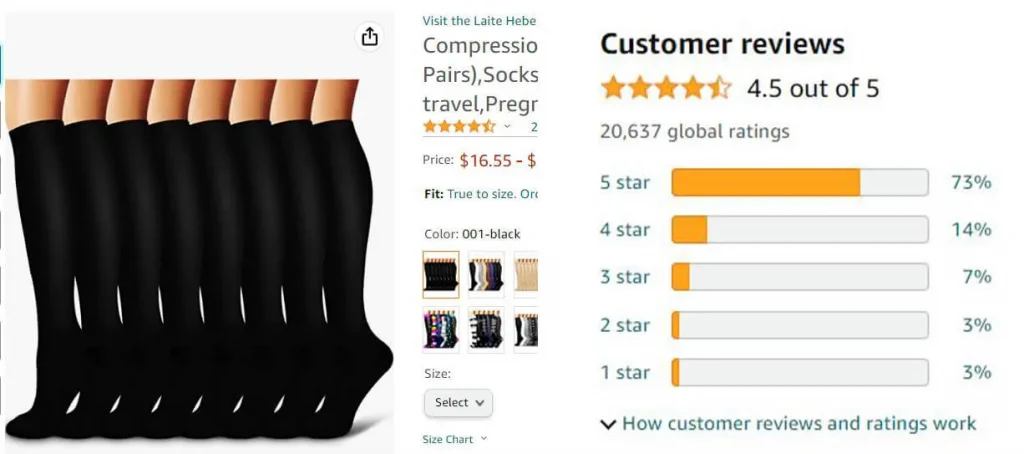

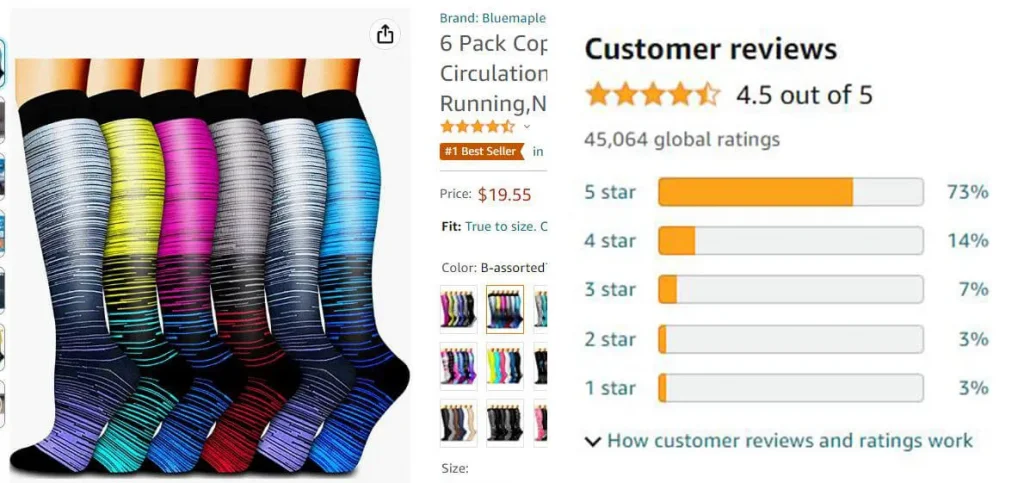
Quality Issue
The quality problems are mainly reflected in the following points:
1) There’re holes on socks.
2) The size of the socks becomes smaller due to shrinkage after washing and drying.
3) There are many threads in the socks, which makes them uncomfortable to wear.
4) The material is rough, which affects the comfort.
Regarding 1 & 3, the main reason is the quality control problem of the sock factory.
A sock factory should arrange an inspection before/during packing, so as to avoid putting defective socks with holes when packing.
For the issues of threads inside the socks, if there’re designs on socks instead of plain socks, then there will inevitably be threads in jacquard socks (we’ve talked about how to distinguish jacquard and printed socks, read here); there is also a thread not brought by socks patterns, but by the continuous cutting of socks in the production process, which are normally cleaned up, but may also be shoddy in factories with poor quality control.

Loose threads
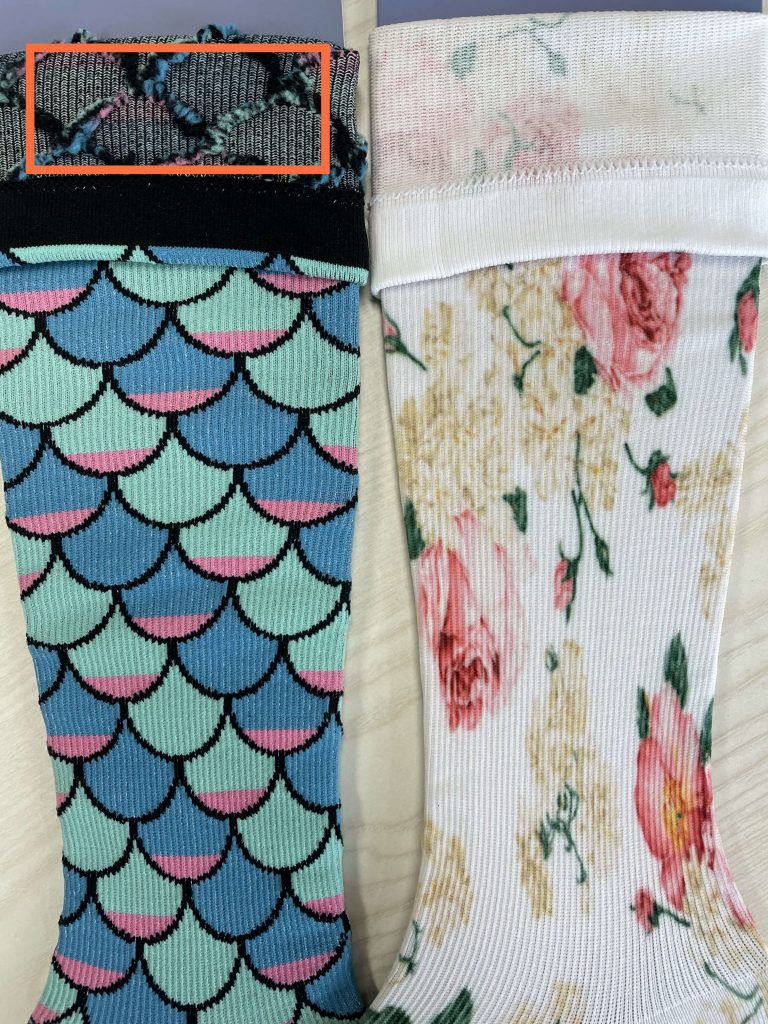
On the issue of shrinkage after washing, this kind of situation is relatively rare in terms of production. Because all the above brandsed compression socks are mainly made of nylon, which is not a material prone to shrinkage, the probability is that the consumer did not refer to the washing and drying instructions, and the shrinkage problem is caused by the washing temperature. The following are the regular washing instructions for compression socks.

Size Issue
This problem is also caused by many reasons, it may be that the brand provided the wrong size specification for the socks, because we found that most of these brands displayed the same size chart. Actually, some of the specifications are completely different and don’t reach the size chart they marked after we checked all the socks. Another problem is that maybe the size chart is right, but the size of the consumer’s leg and the size of the foot don’t match leading to the purchase of unsuitable socks. As a view of a sock manufacturer, when we make different sizes, we generally go from the smallest to the largest foot size with the corresponding incremental top tube size. Therefore, it may happen that a person with a small sole actually has a large top tube size, and then he cannot buy the right size. Production, we can only do the regular standard size, and can not be personalized to customize different sizes.
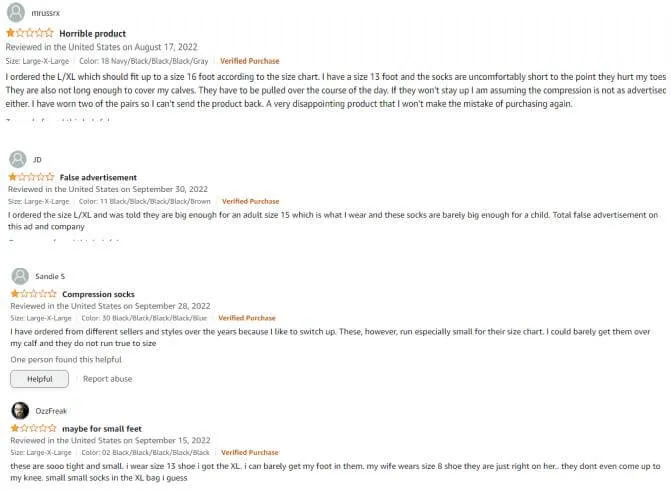
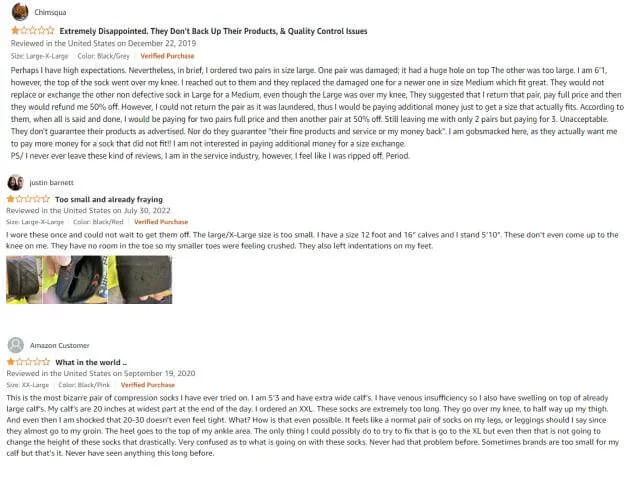
Comfort Issue
Consumers who generally mention the issue of comfort basically complain that compression socks are too tight. Unlike ordinary socks, compression socks mainly rely on pressure to support the legs and play an effect on blood circulation, so this kind of customer group may not be very adaptable to wear these socks. In addition, the comfort of compression socks is also affected by the material, the conventional material of compression socks is mainly nylon, nylon material with the best wear resistance, more suitable for sportswear. For daily wear, it is better to choose cotton or bamboo fiber compression socks. We have mentioned the material of compression socks before, read here.
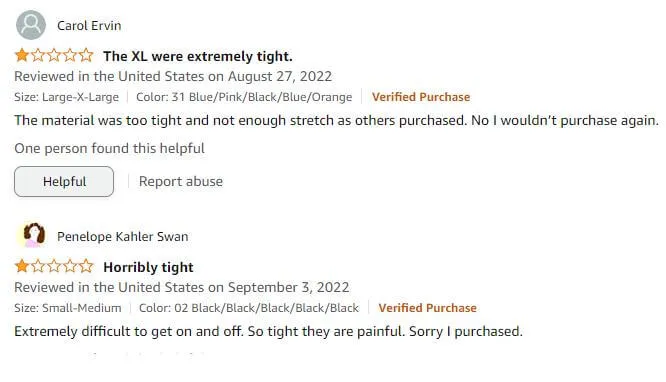
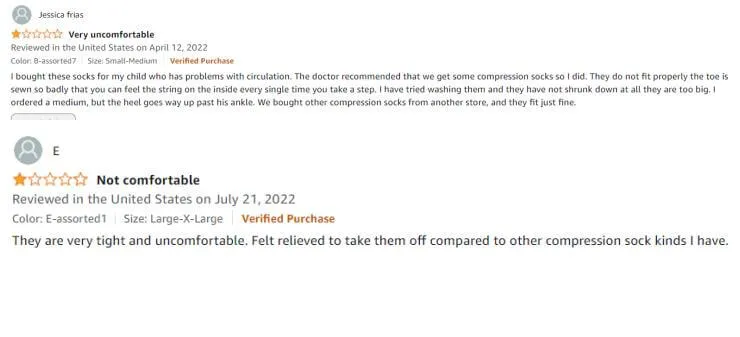
Compression level
On the issue of pressure level, consumer complaints are mainly that it does not work, the compression level is neither too high nor too low. These brands are mainly 15-20 and 20-30 mmHg, which are the two popular compression levels on the market. The compression level does not work probably because the socks are just ordinary nylon sports socks, not professional compression socks. For compression socks like the ones we produce in our factory, you can use the SAG compression level testing device to test the exact compression level, as shown below. In addition, in the selection of the compression levels, 15-20 is a relatively comfortable pressure value, which can be used for daily and sportswear, while 20-30 is more suitable for regular sportswear.
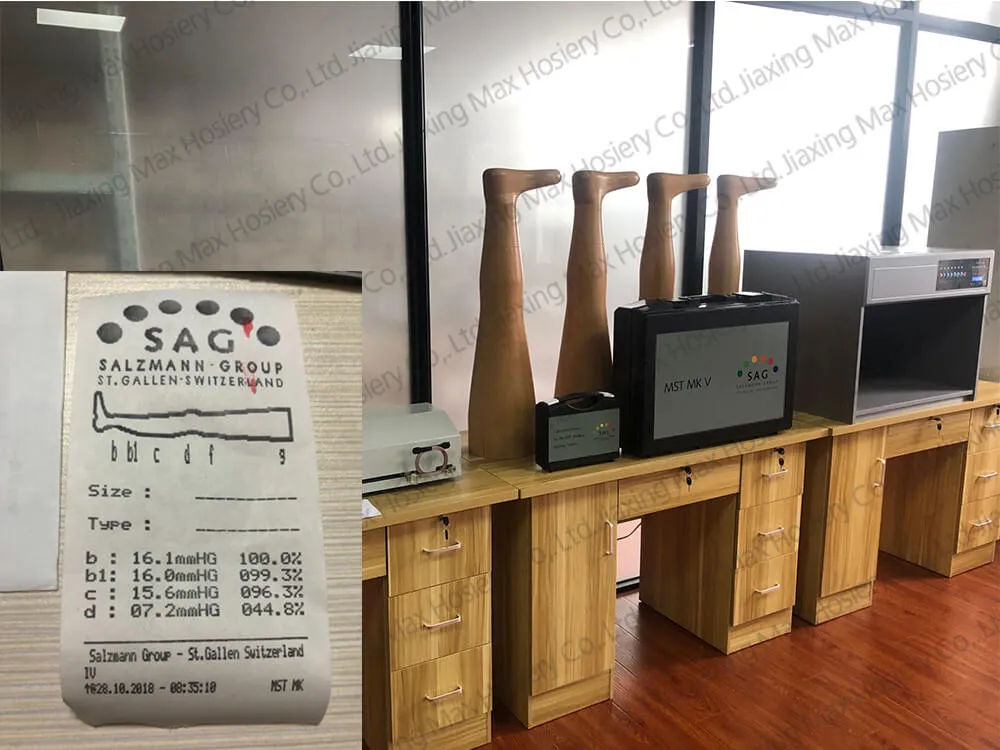
The above is our conclusion from checking the poor reviews of several popular brands of compression socks on Amazon, in addition, we also provide improvement advice from the sock manufacturer’s point of view, hope it can help you. If you have any questions or inquiries about socks in any aspect, you are also welcome to contact us at Max Hosiery, focusing on compression socks production for 20 years.
Follow us below:
